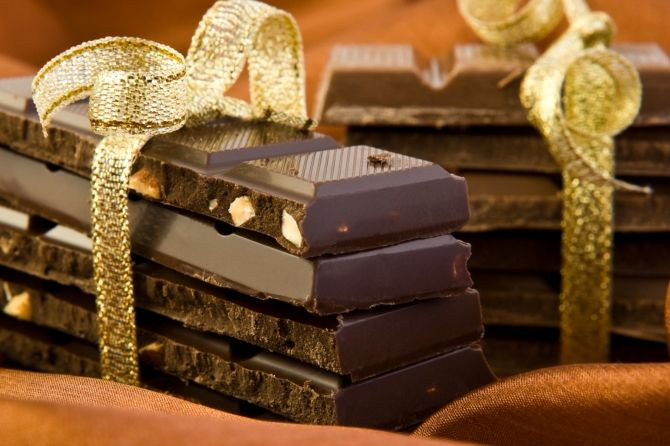Scientists Find Way to Have Chocolate and Eat It Too, By Halving Fat Content With Fruit Juice

As a former paid chocolate connoisseur, I saw a lot of people come to the store and only getting one or two items, not trusting themselves to buy an entire bag and not devour everything in just one sitting.
As beloved as chocolate is for many people, it remains a "sometimes" item, kept away from the likes of broccoli and milk and put away with the chips and other junk food. Now, a group of chemists from the United Kingdom's University of Warwick have devised a system to remove the fattening cocoa butter and milk fats, replacing them with orange and cranberry juice.
Led by Stefan A. Bon, researchers used what is called a Pickering emulsion, much of the cocoa butter and milk fats are extracted from milk, dark, and white chocolate bars and replaced with tiny droplets of orange and cranberry juice, measuring no more than 30 microns in diameter. The chemists made sure that the replacements did not alter the way that the chocolate feels in a person's mouth. While the replacement of cranberry and orange juice did provide a bit of a fruity taste, the chemists also noted that the use of water and a bit of ascorbic acid, like Vitamin C, would have the same effect.
In addition, the use of the Pickering emulsion prevented the fruit juices from pooling together on the bottom. In traditional chocolate that is stored for an excessive period of time, sugar pools together on the outside of a bar or item, creating what is called 'bloom'. The effect is harmless, but does look quite ungainly.
Researchers hope that their work can encourage the confectionary industry to create tasty chocolate bars with lower amounts of fat. They say that their chocolates retain the crisp crack that chocolate bars make when you snap off a piece, but still melt in your mouth. In traditional chocolate bars, those simultaneous, contradictory effects were made with fat – but in the chemists' research, they are recreated created with juice.
The article, written by Stefan A. Bon and his colleagues, The article was published in the Journal of Materials Chemistry.



























